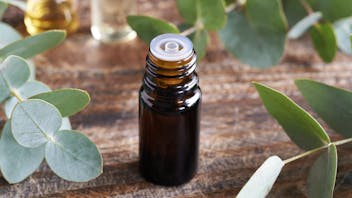Product Overview
Our Ylang Ylang Absolute has a powerful, intensely sweet, dense, balsamic floral aroma typically associated with Ylang Ylang essential oil, however the aroma has more depth and tenacity than that of our steam distilled Ylang Ylang oils. Ylang Ylang Absolute is considered a must-have for any perfumer desiring to create luscious sweet florals with greater tenacity and longevity.
Guenther explains that the absolutes “undoubtedly contain a number of high boiling components not present in the distilled oil, and which contribute greatly to their high fixation value. Being nonvolatile with steam, these high boiling substances are not carried over during distillation of the flowers... In general, the odor of the extracted oils is sweeter, warmer and more ‘velvety’ than that of distilled oils [and] reproduces that of the living flowers to a remarkable degree.”[1]
According to perfumer Alec Lawless, Ylang Ylang Absolute “can be used well below the level of conscious detection yet…still impart valuable body, some lift, and a harmonizing effect.”[2] Arctander states that it is one of the finest floral materials, blending “excellently with jasmine and rose materials…, Peru Balsam oil…, sandalwood oil, cassie, mimosa, etc. It is used in carnation, lilac, lily, narcissus, gardenia, violet, hyacinth, honeysuckle, peony, freesia, sweet pea, and countless other floral bases. Furthermore in...[Amber] perfumes with rose, sandalwood, opopanax, spice oils, … etc.” [3]
DILUTION NOTE: When this material is diluted in perfumer’s alcohol, there may be cloudiness (please see Solubility & Blending Suggestions section). Guenther explains: “The solubility of Ylang Ylang oil, in general, is poor. This statement applies to all qualities (fractions). Usually from 0.5 to 3 [percent by] volume of 95 percent alcohol [is] required to give a clear solution, which often becomes cloudy on addition of more alcohol.”[4] Since Ylang Ylang Absolute shares similar chemical constituents with steam distilled Cananga oils, cloudiness may also occur when the absolute is diluted with 190 proof alcohol. This precipitates upon standing and can be filtered out, leaving a perfectly clear (non-cloudy) dilution.
Need help deciding which Ylang Ylang is right for you? Please see this informative article in our Education section:
1 Guenther, Ernest. The Essential Oils, Vol. 5, 1952/1985, p. 314.
2 Lawless, Alec. Artisan Perfumery or Being Led by the Nose, 2009, p. 76.
3 Arctander, Steffen. Perfume and Flavor Materials of Natural Origin, 1960, p. 665.
4 Guenther, Ernest. The Essential Oils, Vol. V, 1952/1985, p. 300.



